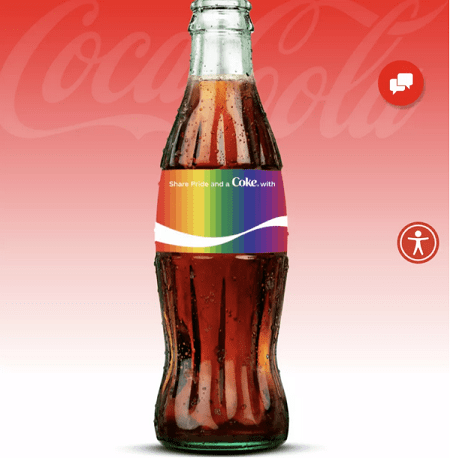A smart merger or acquisition can take a business to the next level. But after the champagne’s been corked and the confetti swept aside, the hard work isn’t over.
To find out how best to dodge the pitfalls and potholes of the M&A road, we picked the brains of agency bosses at recently acquired or merged businesses.
For Lee Beattie, managing partner and chief executive officer of John Doe Group, a merger was the best way forward for her business, Glasgow-based Wire, to grow. ”We’d reached a point in Scotland where we had won all the best agency awards and we had what we considered the best clients.”
While she and business partner Pam Scobbie had seen success pitching to bigger clients down south, the lack of a London outpost was holding them back. ”It was really bloody difficult,” she says.
So, building on an existing relationship with fellow PR firm John Doe, they embarked on a merger to bring the two firms together. ”We wanted to be up for certain brands… and [John Doe managing director Magin Trewhella] wanted to grow the agency. It felt like a jigsaw puzzle coming together,” she says.
In an ideal world, Beattie says she and her three now-co-owners would have taken a week to sit down and ”bolt through all this stuff.” Instead, the process took a year, longer than is typical – there has been a pandemic to deal with, after all. The newly merged John Doe Group is now pitching for work with a combined headcount of 40, and just announced its first win as a combined enterprise with the Highland Spring account.
Nicolas Roope, co-founder of Poke, recalls its 2013 acquisition, and later merger with two other agencies, by Publicis. He and his partners wanted to continue to grow their business, but market conditions were hardening.
”We thrived in our first 10 years because the incumbents didn’t have a clue,” he says. ”But we got to the end of that period and thought that there probably wasn’t long left for agencies like us as independents. Scale was going to be a problem if we didn’t act.”
Poke shopped around for buyers for about a year before choosing the French conglomerate. ”A lot of the value we’d created at Poke was intangible. We wanted to find somewhere where they appreciated what we’d created. Arthur Sadoun [now chief executive of Publicis Groupe] was driving our acquisition… he was very ambitious, he understood the challenges their network faced – and he understood where we were coming from, the value we were bringing to the table.”
After the original sale in 2013, the company was bedded into the wider network over five years; Roope departed in 2018, after organising its merger as Publicis. Poke. ”It was a parting gift – figuring out how to strategically position this merger enterprise and create something new. But once that merger was completed… I didn’t really have a natural position to occupy, so that was the moment to step out.”
Without the hurdle of an acquisition to deal with, mergers between network agencies can generally proceed quicker. So when WPP decided to merge digital shop VML and storied ad agency Y&R in 2018, it moved fast. Planning for the consolidation began just two months before the merger was unveiled, according to global chief executive officer Jon Cook.
”We moved from conception to launch very quickly,” he tells The Drum. ”We announced we were going to merge at the start of the next year… which bought us some time. While everyone knows it happening, you still have a moment to breathe and put the infrastructure in place. It was a good lesson.”
Team journey
Mergers can rearrange the tectonic plates of a business, leading staff to fear that career trajectories are askew. Moving at speed meant Cook’s team could quickly address one of the biggest areas of concern: assuring the staff of both agencies that they still had a berth.
Transparency and timing are key, he says. ”I learned to be very transparent about what I knew. If you can identify why you’re doing this, what the new brand will be and why it will have value – and communicate that with complete confidence while at the same time being very clear about what you don’t yet know – people are generally going to understand.”
According to Stephen Maher, chair and chief executive officer of the freshly merged customer experience agency MBAstack (formed after MSQ acquired MBA), it’s important to ”reassure everyone that there aren’t going to be redundancies.”
”I just think you have to be upfront. We said that, fundamentally, nothing’s changing. It’ll be the same people, the same relationships and the same culture. There will be refinements, but there will also be more resources because we’ll have more people.”
Beattie advises: ”You have to talk to the team at the right time, when you’re certain that it is definitely going to happen and you can actually answer their questions. Everyone’s going be thinking: what does this mean for me? If you can’t answer that, you probably shouldn’t be having the conversation.”
Managing internal announcements is a little easier when staff number in the dozens. For VMLY&R, hundreds of agency leaders needed to be brought into the fold in advance. ”You need to make a judgement on how many people you need, and can trust, to get the right amount of work done before an announcement. If you have too few you’ll be ill-prepared when you announce. And if you have too many, you’ll run the risk of communications being leaked,” Cook warns.
As the agencies integrated together, Cook says that particular attention was given to managing staff concerns. ”I was sure people would see the value and the strategy in it. But I was nervous – would everybody be able to find their place in that new company? My ultimate fear was that someone would feel smaller as the company got bigger.
”We put a lot of work into making sure that no person felt smaller. We have a lot of people so I can’t say without exception, but I feel we’ve done a good job of making it so you get bigger as we get bigger,” he explains.
Still, some departures are to be expected. Between location changes and the transition to a larger organization, ”you’re going to lose a bunch of people,” says Roope.
He recalls that persuading Poke’s ”extraordinary, eccentric” team was tough. ”One of the biggest challenges of the whole thing is taking the team on the journey. You have to accept you’re moving into a new reality – you can’t take everything that you’ve built. For more seasoned staff who’ve seen these things before, they’ll know what’s coming. But it’s particularly acute people for who’ve been with you for a long time.
”There’s a lot of fear about the consequences of being acquired – did that mean we were going to be like every other Publicis agency?”
Despite occurring during a pandemic-fuelled recession, both the MBAstack and John Doe Group mergers were completed without redundancies. VMLY&R lost about 1% of its global headcount in the wake of the move, though Cook states this was due to ”natural efficiencies” rather than a concerted cost-cutting effort, and that its staff numbers have since grown anew.
Client confidence
Just as important is communicating a new consolidation to clients. A spokesperson for AKQA, which merged with Grey last year, tells The Drum: ”The key focus areas are our clients and employees. This is also in line with key decisions around communications and operations.
”Clients were consulted early in the process to gain their feedback and highlight the additional benefits of the businesses working more closely together.”
For Beattie, ”the important thing is: what does it mean for them? What are the benefits each client is going to get from the merger? Or is absolutely nothing going to change?”
Cook explains: ”It’s critical to reach a certain amount of your client base before it happens, so they have some trust, a heads-up and a feeling of ownership about the decision.”
He emphasizes the need ”to communicate clearly what you’re doing and why you’re doing it… to communicate that nothing of the goodness of your relationship will change or go away. And to communicate the new value of the bigger company.”
”Once those assurances are in place,” says Cook, ”client partners become start to become very interested in what new capability you have that can help them move their brand forward.”
Name games
When it comes to unveiling the new combined agency, language is important. A consolidated agency’s name can broadcast continuity – as in the case of double-barrelled monikers such as Wunderman Thompson – or a new start, as in the case of Superunion, which was formed from five older branding shops.
While VMLY&R’s acronym doesn’t quite roll off the tongue, Cook argues it was important to keep the identities of its constituent parts intact. ”We have a lot of letters. I’m the first one to make fun of our long name… but in exchange, you’re not losing the heritage of either of these two brands.
”There’s no way we wanted any part of the company to feel marginalized or lesser. It was too bad we didn’t merge with a company with some vowels, because we could have made a word out of it.”
Similarly at MBAstack, Maher says the name was settled after a collective decision to retain both brands. ”We felt it was the right thing for the market. And it sounds a bit better, with MBA first and Stack second.”
For Dentsu agency iProspect, which recently relaunched after absorbing Vizeum, a new handle wasn’t deemed necessary. Amanda Morrissey, global president of iProspect, explains: ”The reason for this is two-fold… firstly, and most crucially, we wanted to spend more of our time and energy on building solutions for our clients than building our own agency brand.
”Secondly, the iProspect brand name already has a huge global footprint and is universally synonymous with digital excellence that has performance at the centre. We therefore felt that keeping the name was the right thing to do, as so much of the brand notoriety is already in place.”
Culture clashes
Definitions of a successful merger also differ. For AKQA, it’s simple enough: ”Success of the collaboration is measured by the recognized increased opportunity for both our clients and employees.” Elsewhere, success isn’t so closely tied to balance sheets. Much of the post-merger work focuses on making sure the working cultures of each agency still exist in a meaningful way.
Maher admits it’s ”a journey not a destination,” and says MBAstack will likely take six months to knit together. The business has a new website in the works, and both the Stack and MBA teams will soon be moving to MSQ’s new offices in Covent Garden when lockdown subsides. ”It’s a work in progress. We’re going to keep evolving,” he says.
Roope says that the benefits of Poke’s sale to Publicis only were only illuminated when its team reluctantly moved from its Shoreditch base to bigger premises across London. ”It was only really when we stepped into the building that network started to pay… because we were much more integrated,” he says.
True success came, he says, when Poke began to influence the rest of Publicis’ operations. ”We brought fresh thinking, a different perspective when at the time it was a monoculture that was absolutely above-the-line. We weren’t the only catalyst in that, but it reinvigorated the London side of the network,” he says.
While merging two global giants together is a complex endeavour, Cook says he was confident of success just two months in. ”We gathered 200 of our top leaders to [VML headquarters] Kansas City, from all over the world. And you could just feel a sense of unity, a sense of pride. We knew this was going to work.” By the time the team touched down at Cannes the following summer, things were coming together and business had picked up, with a 14% increase in billings in the UK.
”Walking into Cannes, we already felt we had a swagger. We were getting recognition for the work for our clients that this new company had done… that was a good message that we’re doing what a great agency is supposed to do, and that’s great work.”
A month after from her business’ rebirth as John Doe Group, Beattie doesn’t yet have the privilege of hindsight. The teams of each agency were already well acquainted, with the merger built upon an existing relationship; the two businesses already shared client work. Having avoided a direct culture clash, she’s confident the consolidation has already begun to yield results and achieve their major goal – puncturing the London bubble.
”It’s definitely already working. We’ve just won our first new account. We’ve done more pitching in the last couple of months than I did in over the whole of last year.”











